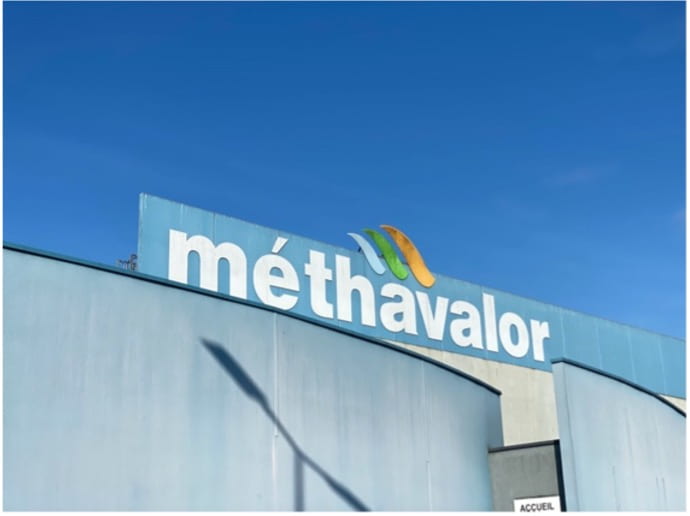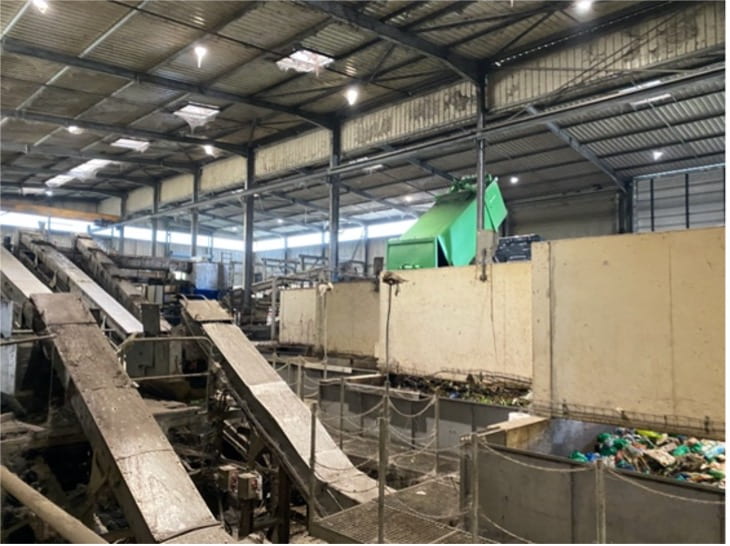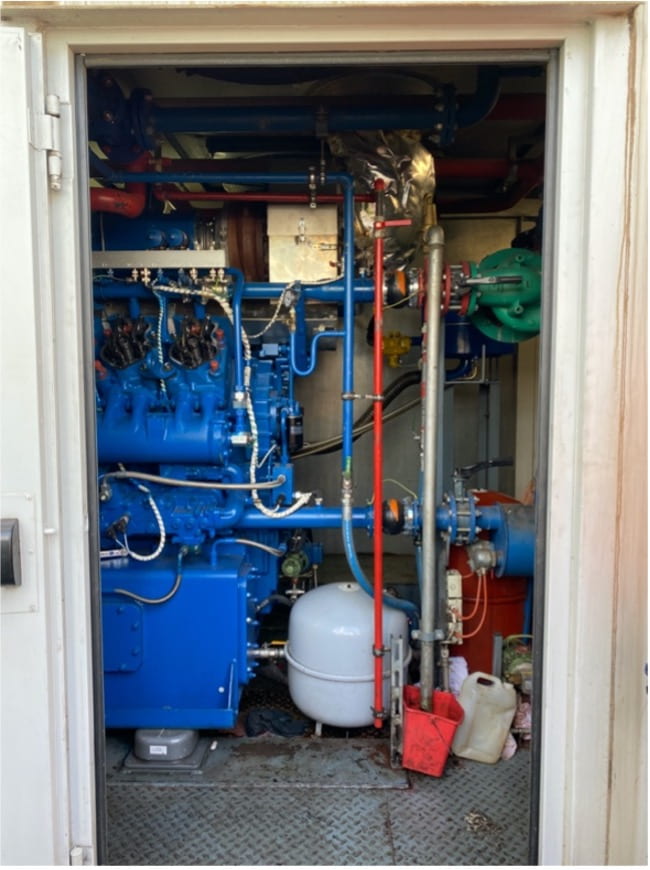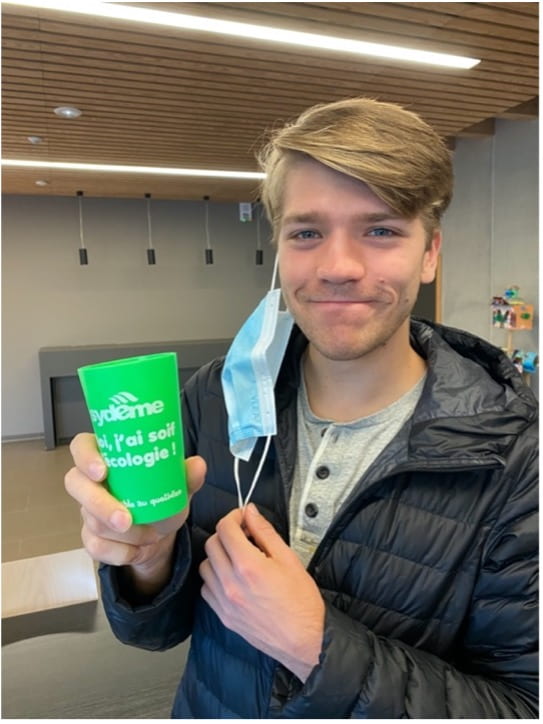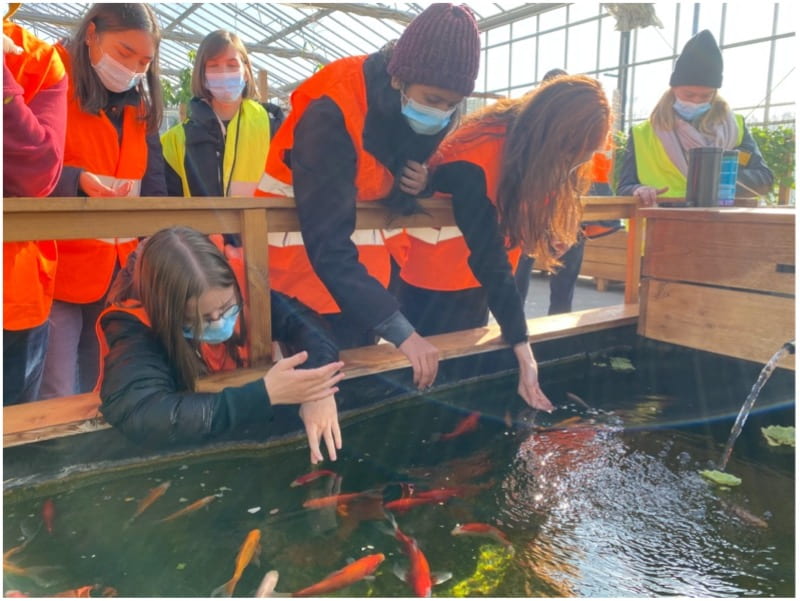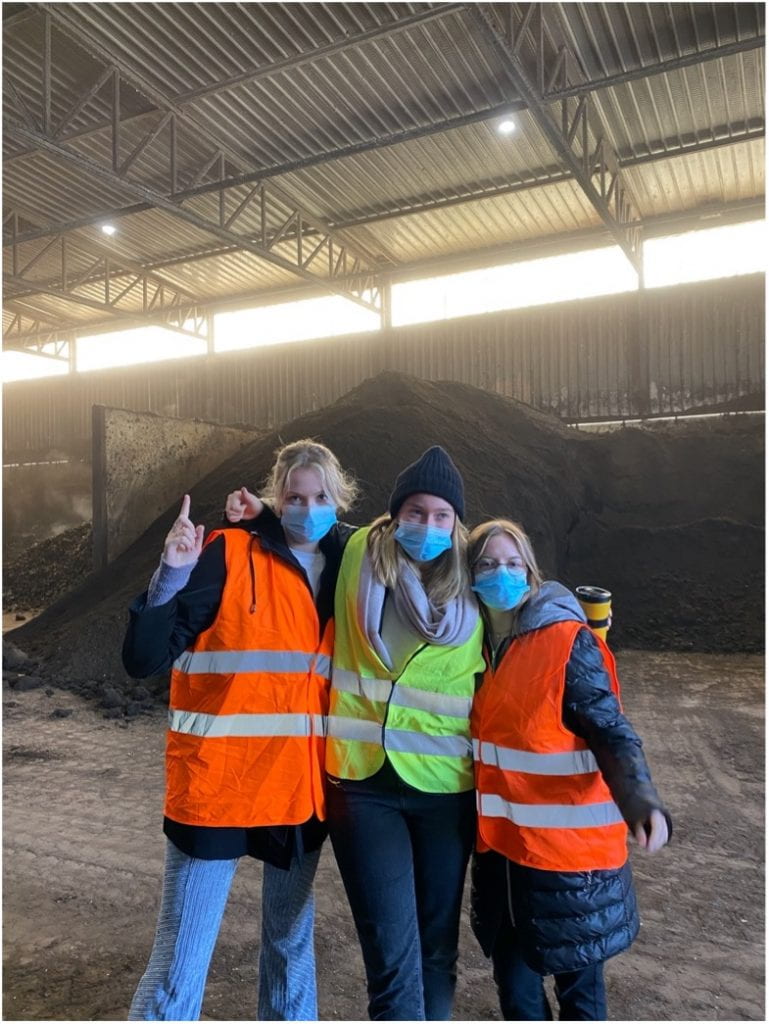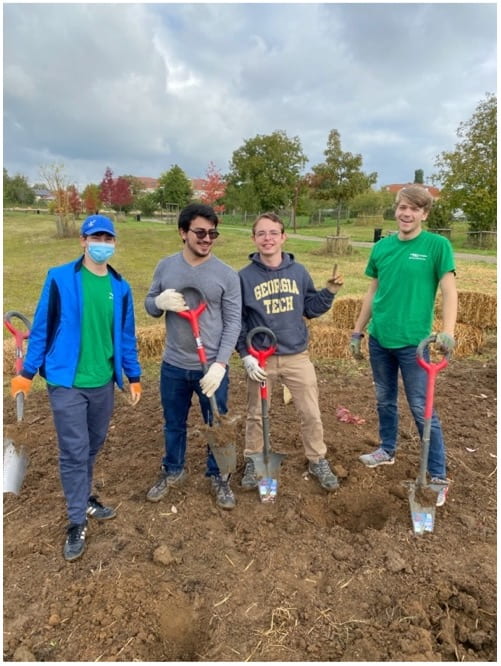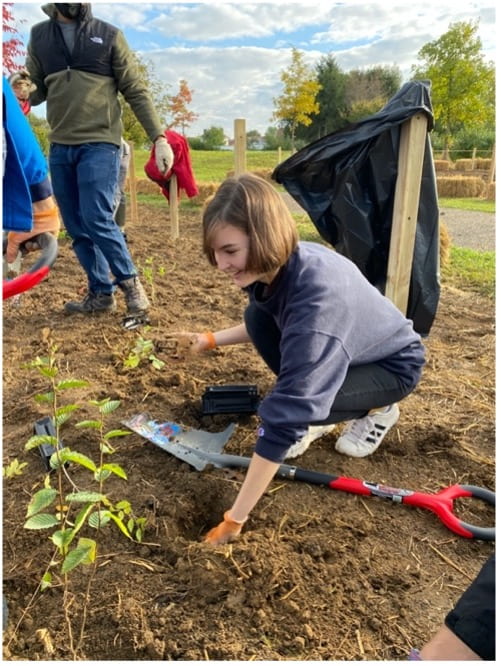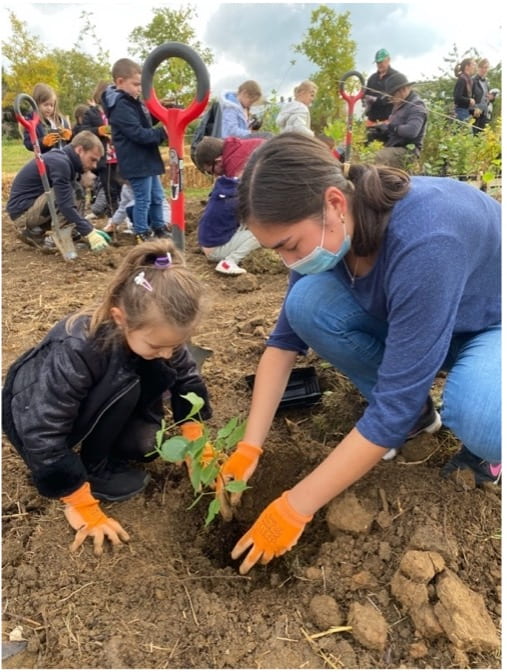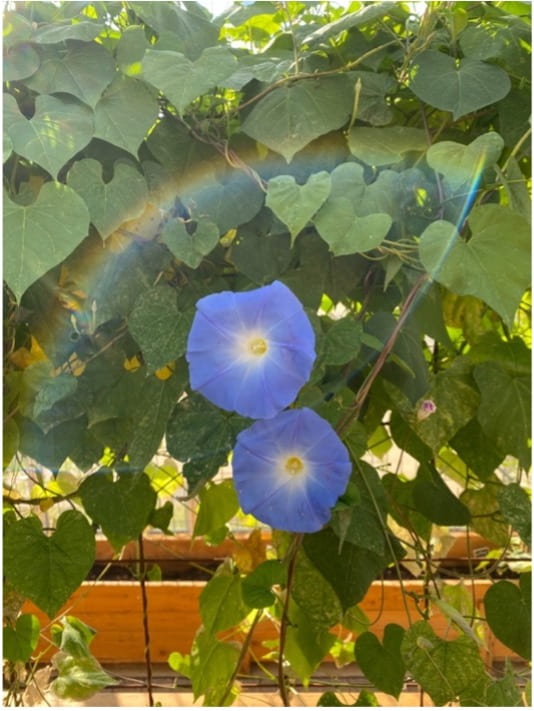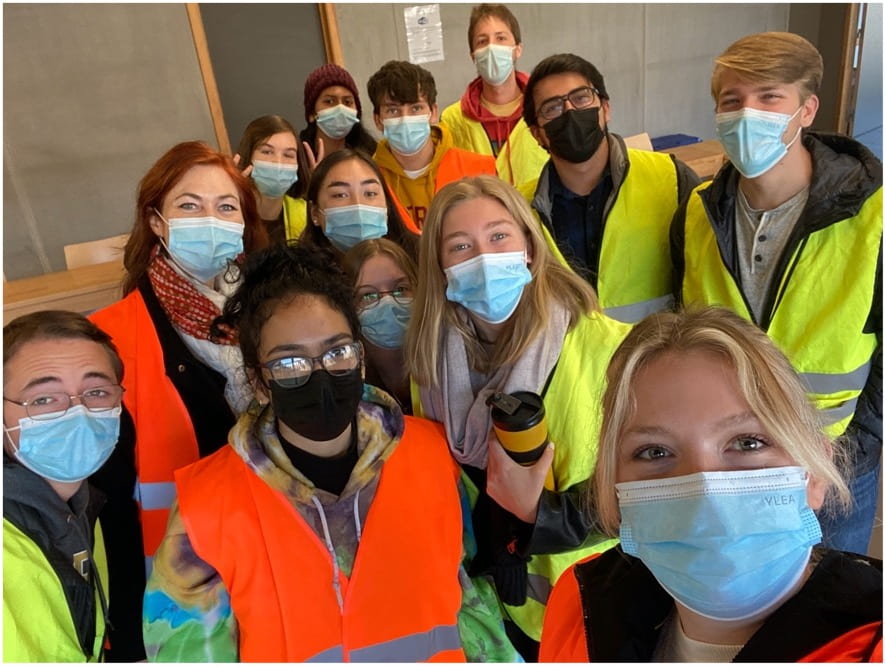For the past two weeks, my fellow SLS students and I have had the opportunity to work with the organization Motris to pursue its mission to create urban forests and plant 10,000 trees in two weeks in the city of Metz. The first week we went to Parc du Sansonnet, where the organization had prepared two plots for us to start planting. I was honestly shocked at how easy it was! They handed us some shovels and gloves, and the only rule was that we couldn’t plant two of the same trees next to each other, as they were following a specific method called the “Miyawaki method”. This method developed by Japanese botanist and expert in plant ecology, Akira Miyawaki, takes into account ecological successions, and allows to immediately plant an advanced forest through the choice of the most adapted plant communities based on cooperation between trees. The method’s reconstitution of “indigenous forests by indigenous trees” produces rich, dense and efficient protective pioneer forests in 20 to 30 years, where natural succession would need 200 years.
Trees make a huge difference in the environment for the better, and often people allow themselves to be deterred from planting them because they think it will be some intensive process, but it’s not. We were not alone in our tree planting endeavors. We were joined by two different classes from local elementary schools! Some of us continued to dig holes for the children to put the trees in (probably better not to hand shovels to a group of kids), while others helped them loosen the tree roots and made sure they covered them with enough dirt! The children were so cute and excited, and I actually learned quite a bit of gardening vocabulary from them! I thought it was refreshing to see that they are being taught about environmental consciousness at such a young age and getting hands-on experiences with nature in a learning environment. I definitely did not get to plant trees during class when I was in elementary school, and it probably would’ve made me more environmentally aware far earlier in life. It is essential to show kids how fun and easy it is to make an impact because it changes the prevalent narrative of “you are too young to make a difference” by filling them with the inspiration to do great things. Just as my generation is shaping what the future will look like for them, they will one day shape the future for my children, and they are already getting a head start at six years old!
When we were at the first of the two tree planting sites, we had an exciting opportunity to talk to some people from the local newspaper! They were very interested in what Motris is doing for the community, and they also thought it was cool that students from Georgia Tech in Atlanta were there to help. They interviewed several of us and asked us about the SLS program, why urban forests are essential, and the differences between urban ecology in Atlanta and Metz. They also had a photographer there getting down in the dirt for the perfect shot (figure 1), although I must say I am not sure many photos top the mid-air action shot of Marc digging a hole (figure 2). All jokes aside, the paper did end up writing an article and publishing some of our photos which was super cool and great for the program! We are incredibly grateful for the feature and the opportunity to impact Metz positively! I hope I will be able to come back to Metz in the future and see the growth of the trees we have planted here!
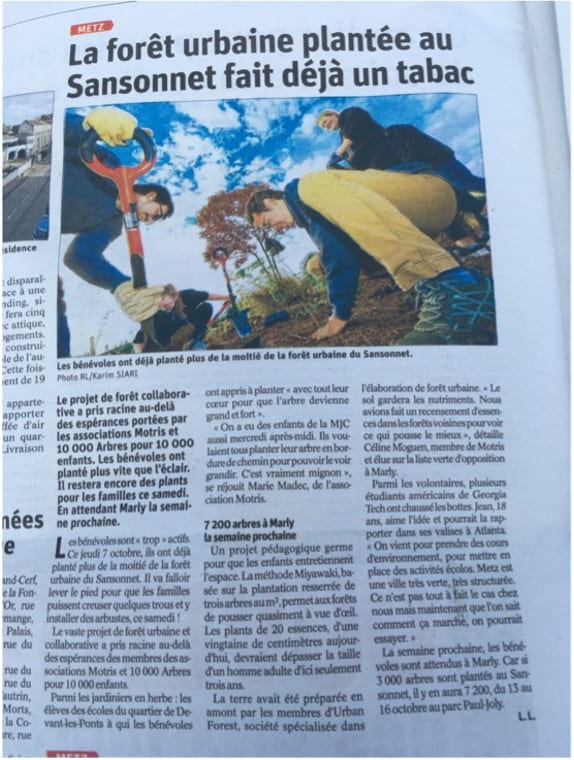
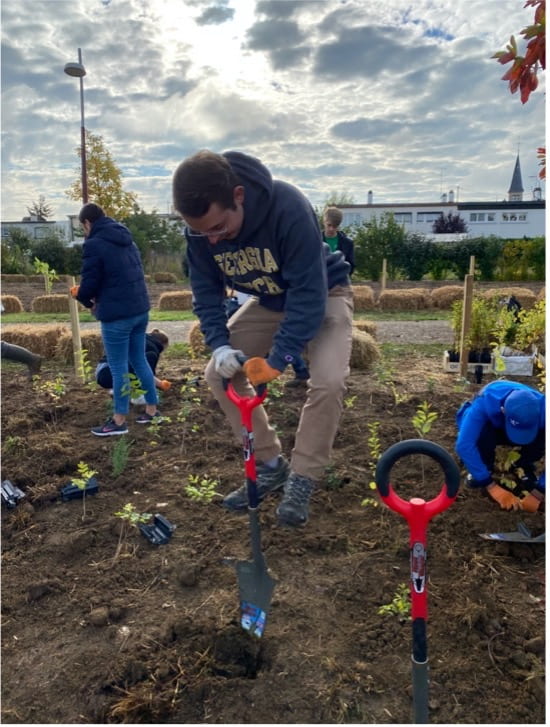
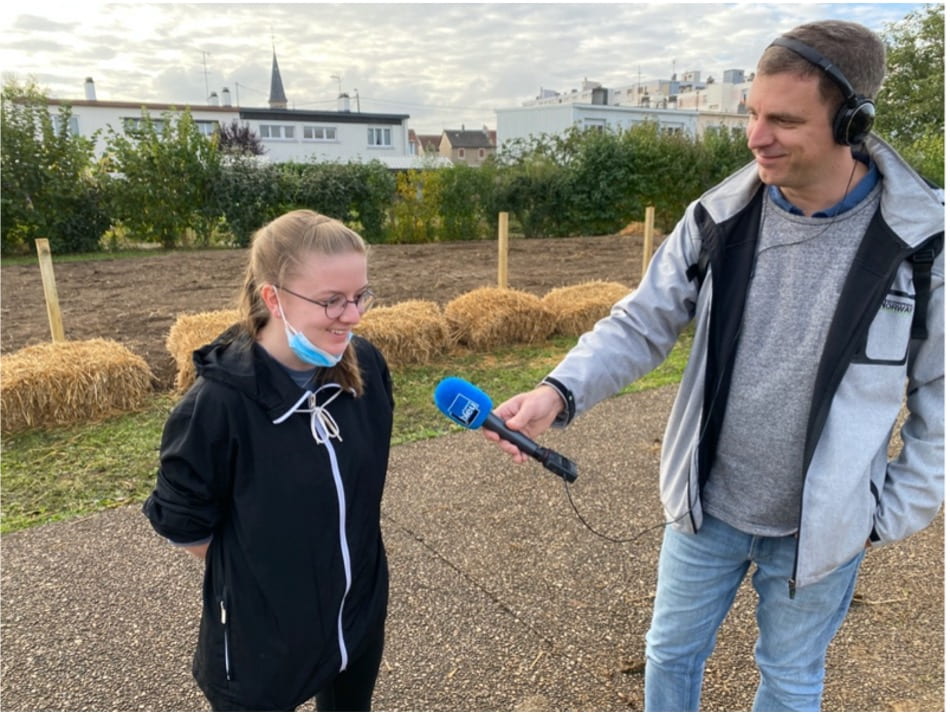
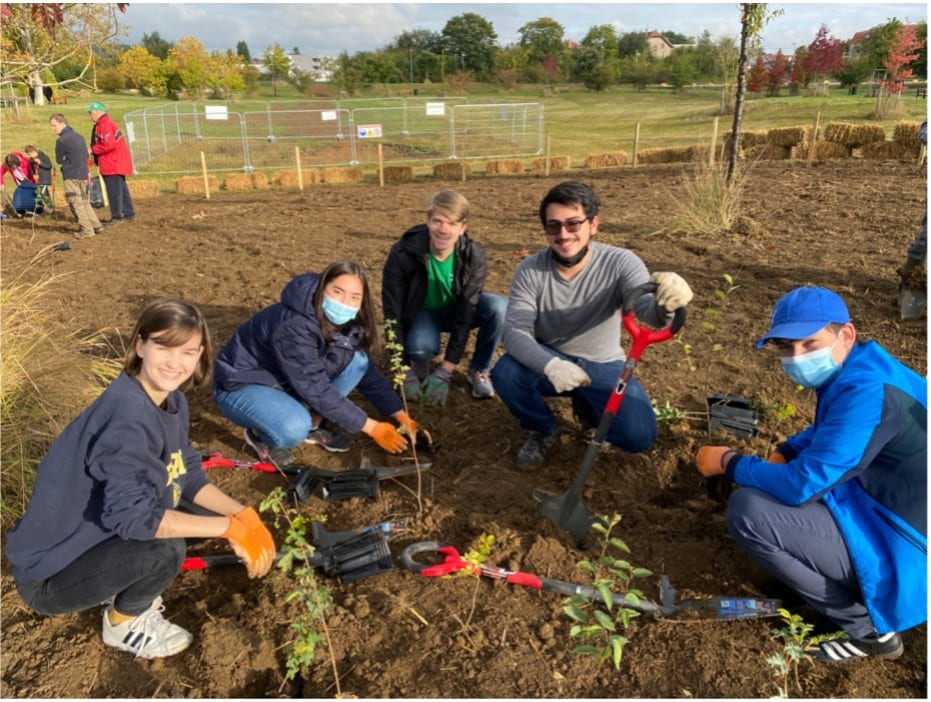
This week we also had one of our smelliest and most fascinating field trips yet! We visited the Méthavalor recycling plant. Here they recycle three main categories of trash: typical recycling (paper, plastic), compost waste, and miscellaneous trash. These three categories are separated by bag color, with orange for recycling, green for compost, and blue for all other trash. We got to walk through the factory that processes the compostable waste, and a room full of tons of rotting food smelled just about as you would expect. Regardless of the smell, it was very cool to see such a mass composting initiative. The most thought-provoking part of their composting process is the way they utilize the gases produced during food breakdown. Now, I am not a chemical engineering major for a reason, so I cannot tell you precisely what gas is used for what. However, I do know that they use the chemicals produced during the process to power their company vehicles, which is genius. This gas extraction is a somewhat tedious process that would take some time to adapt for large-scale use, but I really do believe it could be the future of fuel if perfected! I found this tour intriguing because we got to physically see each step of the process, starting in the room with the large bins of compost waste, the gas processing room, the piles of fertilizer, and lastly, seeing the cars that utilize compost power! We finished our tour by visiting their beautiful greenhouse, where they also use aquaponic techniques like the “Jardin pour 2 Mains” where we also volunteer! As always, Marc was ready for a great photo with one of the scarecrows, and Dr. Boulard, Laynie, and Samyuktha got to feed the fish. So, I would say it was a great ending to a great visit!
